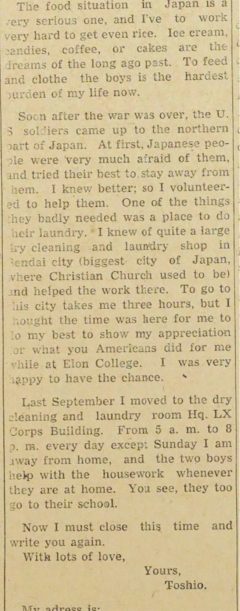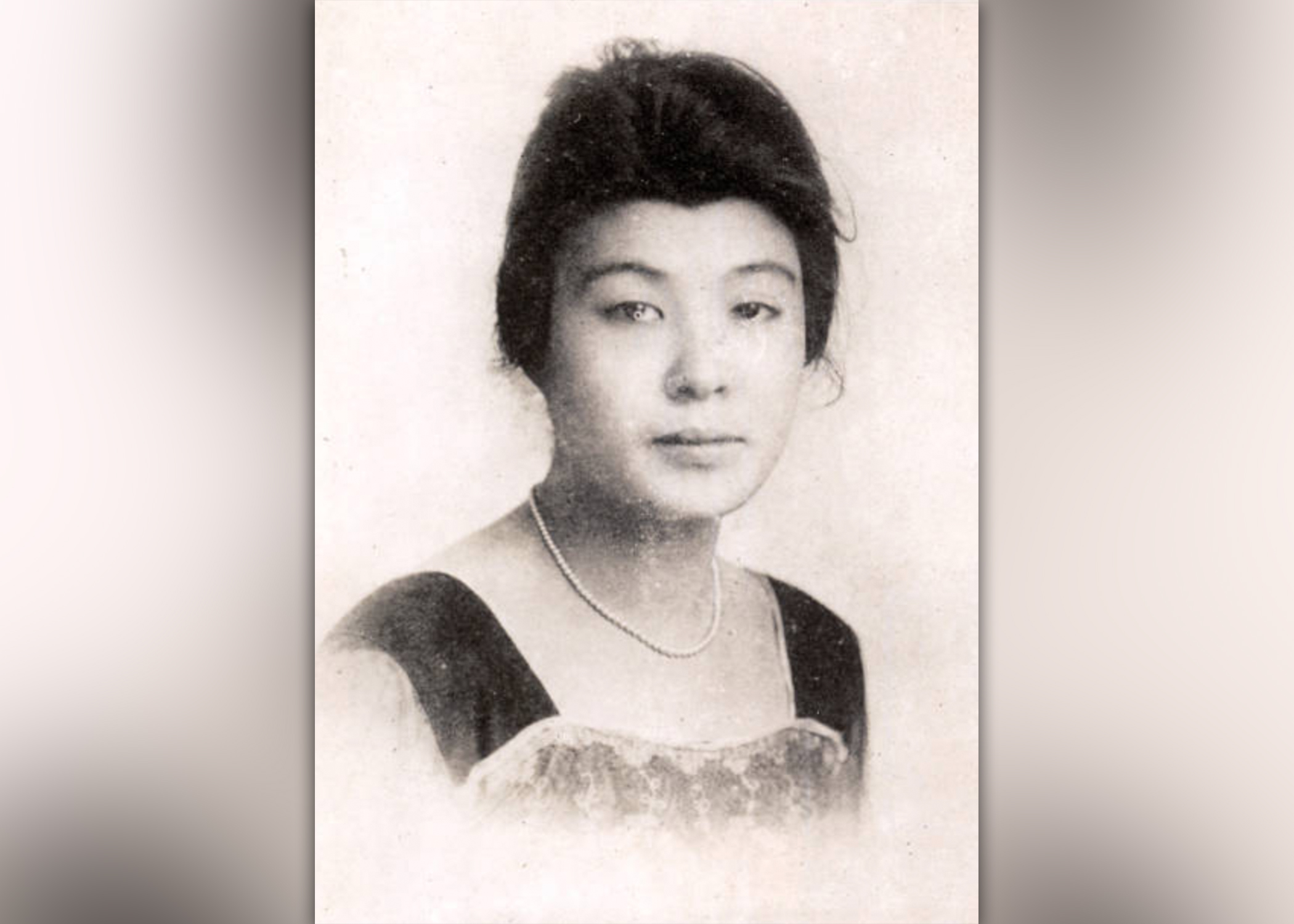Toshio Sato of Utsunomiya, Japan, graduated at the top of her class in 1920.
Over the years, thousands of students have gathered Under the Oaks to celebrate their academic achievements at Elon and begin the next chapter of their lives. All graduates’ accomplishments are unique, as each student has embarked on their own journey to receive their diploma. Last year marked the 100th anniversary of the culmination of an Elon graduate’s academic journey that spanned over six years and 6,000 miles.

In fall 1914 Toshio Sato enrolled at Elon College as its first Japanese student. The Utsunomiya, Japan, native traveled 6,813 miles to start her classes at Elon at the invitation of Alice True, a member of the board of trustees who met Sato while traveling in Japan for missionary work.
Throughout her six years at Elon, Sato pursued a certificate in art and a diploma in art. She was heavily involved in college life throughout her time at Elon, serving as a representative of the Psiphelian Literary Society and a member of the student volunteer band. She also served on the cabinet of the Young Women’s Christian Association and was elected president of the organization in 1920. Additionally, Sato was involved in student government as secretary of the senior class and president of the Student Council. At the time, the Student Council was the self-governing body of women students at Elon College. Years after Sato graduated in 1920, the Student Council merged with the men’s Student Senate to form the Student Government Association, which still has a prominent presence on campus today.
Sato, along with classmate Ollie McCollum, received the “Biggest Flirt” senior superlative title in the 1920 publication of the Phi Psi Cli yearbook. The yearbook recorded that “To know her is to love her… our beloved classmate came from a faraway clime and broke all records of scholarship, loyalty, and devotion to duty.”
Sato was the valedictorian of her class. In her speech, which was titled “Is It Nothing to You,” she encouraged her fellow graduates to act on their faith and support refugees of World War I. The speech was published in the June 1920 edition of The Christian Sun newspaper, after which Sato was awarded two prestigious awards: the Wellons Scholarship Medal and the Moffit Essayist’s Medal.
After graduation, Sato returned to Japan, where she worked as a teacher for many years. Sato was praised by the principal of the school for her “perfectly wonderful work,” according to a 1921 Christian Sun article. Sato married Kameichi Kato, a graduate of the University of North Carolina at Chapel Hill. The couple met when Sato was studying at Elon and married shortly after returning to Japan. They had four children: three sons and a daughter. The daughter passed away at age 10, and all three sons graduated from college in Japan.
Throughout the 1920s, Sato kept in touch with her Elon friends through letters. However, she found it increasingly difficult to correspond with them as the 1930s began, with tensions rising leading up to World War II. Sato was finally able to send a letter to her friend Lucy Eldredge in 1947 after the war ended.
In the letter, Sato explained the difficulties that her family faced throughout the war, including the loss of their Tokyo home in a bombing. After the fighting ceased, Sato volunteered her time helping U.S. soldiers who were stranded in Japan. She wrote in her letter, “I thought this time was here for me to do my best to show my appreciation for what you Americans did for me while at Elon College.”
Sato died of a heart attack at age 71. Her son wrote to Elon to inform the community of her death. An article was promptly sent out in the alumni newsletter, titled “Toshio — A Beloved Member of the Elon Family.”



